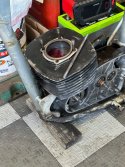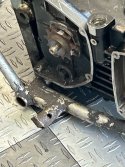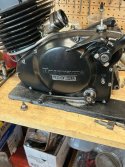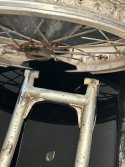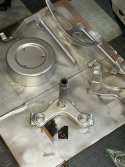Crashaholic
Husqvarna
Pro Class
And what about this!  I found this photo of a clutch that I adjusted to even the gap between the pressure plate and the disc stack. Had to tighten the nuts more than 9 turns. I used feeler gauges to make sure the gap was even since we're dealing with a gap of only a couple millimeters. Notice the difference in the amount the nuts are screwed on to the studs. The spacer mod would not have worked with this disc stack as the gap .
I found this photo of a clutch that I adjusted to even the gap between the pressure plate and the disc stack. Had to tighten the nuts more than 9 turns. I used feeler gauges to make sure the gap was even since we're dealing with a gap of only a couple millimeters. Notice the difference in the amount the nuts are screwed on to the studs. The spacer mod would not have worked with this disc stack as the gap .

This is a new build and the nuts are not the same height indicating the need to adjust the pressure plate to clutch stack gap.

 I found this photo of a clutch that I adjusted to even the gap between the pressure plate and the disc stack. Had to tighten the nuts more than 9 turns. I used feeler gauges to make sure the gap was even since we're dealing with a gap of only a couple millimeters. Notice the difference in the amount the nuts are screwed on to the studs. The spacer mod would not have worked with this disc stack as the gap .
I found this photo of a clutch that I adjusted to even the gap between the pressure plate and the disc stack. Had to tighten the nuts more than 9 turns. I used feeler gauges to make sure the gap was even since we're dealing with a gap of only a couple millimeters. Notice the difference in the amount the nuts are screwed on to the studs. The spacer mod would not have worked with this disc stack as the gap .
This is a new build and the nuts are not the same height indicating the need to adjust the pressure plate to clutch stack gap.






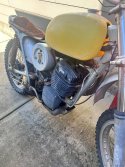
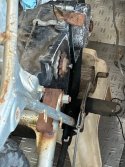
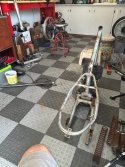
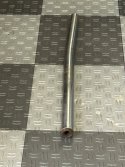
 and of course the sprocket is holding fast with 2 teeth now missing! At least my tool didn't break this time : )
and of course the sprocket is holding fast with 2 teeth now missing! At least my tool didn't break this time : )